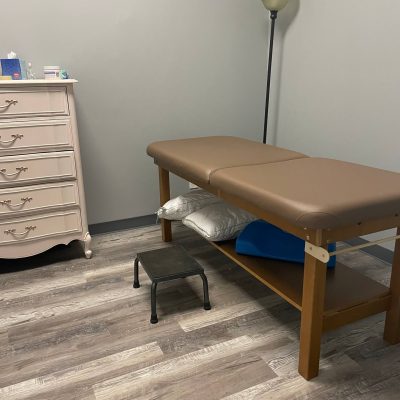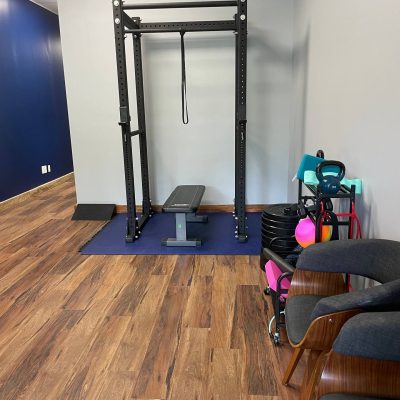When we think about the pelvic floor, most people focus on muscles—strength, coordination, and control. But there’s another system that plays a crucial role in pelvic health and healing: the lymphatic system.
If you’ve undergone surgery, radiation, or cancer treatment that affected your abdomen, pelvis, or groin, your lymphatic system may also have been impacted. This can lead to lymphedema—a buildup of lymphatic fluid that causes swelling, heaviness, or discomfort.
As a pelvic floor physical therapist, I often work with individuals recovering from cancer or pelvic surgery, and understanding how lymph health and pelvic floor function connect is essential to restoring comfort, mobility, and confidence.
What Is the Lymphatic System?
The lymphatic system is your body’s natural drainage network. It helps remove waste, transport immune cells, and maintain fluid balance.
Lymph fluid flows through a series of vessels and nodes—many of which are located in the pelvic and inguinal (groin) region. When those lymph nodes are removed or damaged, such as during cancer treatment, the flow of lymph can become restricted. This may lead to lymphedema, which can appear in the:
- Genital area
- Lower abdomen
- Inner thighs or groin
- Legs
This swelling isn’t just cosmetic—it can affect how tissues move, how muscles function, and even how your pelvic floor coordinates daily activities like urination, bowel movements, or intimacy.
How Lymph Health Impacts the Pelvic Floor
The pelvic floor and the lymphatic system are deeply connected, both anatomically and functionally. Here’s how one influences the other:
- Swelling Creates Pressure and Guarding
When lymph fluid accumulates, it can create a sensation of heaviness or fullness in the pelvis. The body’s natural response is often to tighten surrounding muscles—including the pelvic floor—to “protect” the area. Over time, this guarding can lead to discomfort, pain, or difficulty relaxing the muscles when you need to empty your bladder or bowel.
- Restricted Movement Affects Circulation
Healthy lymph flow depends on muscle and diaphragm movement. When the pelvic floor or core muscles are tight or underused—common after surgery or radiation—lymph flow slows down. This can cause persistent swelling and delay healing.
Pelvic floor therapy helps restore gentle motion through breathing, positional changes, and soft tissue mobilization, all of which improve lymphatic return.
- Scar Tissue & Fibrosis Limit Flow
After cancer treatment, scar tissue or radiation fibrosis can create physical barriers to lymph drainage. These adhesions not only affect the skin and fascia but can also alter pelvic alignment and tissue mobility. Manual therapy and gentle myofascial release can help restore glide and comfort, making it easier for fluid to move through the system.
- Posture and Pressure Management
Poor posture, chronic straining, or shallow breathing increase intra-abdominal pressure, which can interfere with both lymph flow and pelvic floor balance. Learning how to move and breathe efficiently supports both systems—reducing swelling while protecting pelvic organs.
Signs of Pelvic-Related Lymphedema
Post-cancer or post-surgical lymphedema in the pelvic region can present differently than swelling in the limbs. Common signs include:
- A feeling of heaviness, fullness, or pressure in the groin or lower abdomen
- Swelling in the labia, scrotum, perineum, or inner thighs
- Tightness in clothing that didn’t feel restrictive before
- Aching or throbbing after prolonged sitting or standing
- Pain or reduced sensation with intimacy
- Difficulty fully emptying the bladder or bowel
If you notice any of these changes, it’s important to discuss them with your care team. Early intervention makes a significant difference in comfort and long-term outcomes.
How Pelvic Floor Physical Therapy Can Help
Pelvic floor therapists trained in oncologic rehabilitation or lymphedema management use a combination of gentle techniques and education to promote both muscle function and lymph flow.
Your treatment plan may include:
- Manual Lymphatic Drainage (MLD): Gentle, rhythmic movements that help redirect fluid to healthy lymph channels.
- Breathwork & Diaphragm Integration: Coordinating the breath with pelvic floor movement to create a natural lymph “pump.”
- Scar Mobilization: Soft tissue techniques to restore mobility and reduce fibrosis.
- Pelvic Floor Coordination: Learning to contract and relax the muscles to support drainage and ease pressure.
- Compression & Positioning Strategies: Education on clothing, support garments, and positions that encourage lymph flow.
- Self-Care Routines: Teaching home exercises, hydration habits, and gentle movement practices to maintain results between visits.
This holistic approach supports not only the physical aspects of healing but also the emotional and psychological recovery process—helping you feel more connected and confident in your body after cancer treatment.
When to Seek Help
You don’t need to wait for severe swelling to seek care. Pelvic floor therapy can be helpful if you:
- Feel persistent pelvic heaviness, tightness, or fullness
- Notice swelling or puffiness around the groin or genital area
- Experience pain or restriction after radiation or surgery
- Have difficulty with bladder or bowel emptying
- Want to prevent lymphedema after cancer treatment
Early support can prevent chronic changes and improve long-term quality of life.
The Takeaway
The lymphatic and pelvic floor systems are partners in healing. When one is compromised—by surgery, radiation, or scar tissue—the other is affected. The good news is that gentle, guided rehabilitation can restore movement, comfort, and confidence over time.
Pelvic floor therapy provides a safe, supportive space to address these intimate and often overlooked side effects of cancer recovery. By improving lymph flow and pelvic function together, we help you move toward whole-body healing—inside and out.







